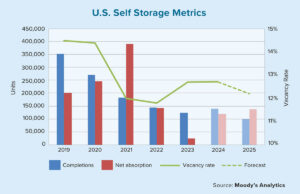New options for commercial real estate investors continue to emerge. The average person is now able to participate in opportunities that previously required large amounts of capital, and thus were only available to institutional investors and high net worth individuals.
Commercial mortgage funds that operate under a real estate investment trust (REIT) structure and deliver a streamlined experience to investors are quickly gaining attention. These mortgage REITs can raise money through a variety of membership interests, allowing investors to become an equity partner in the entire fund rather than only in a particular loan.
Capital configuration
Unlike an equity REIT, which invests in the development and operations of property, a mortgage REIT invests in real estate debt or mortgages. Mortgage REITs raise money through a public or private offering of membership interests to investors, and then make loans secured by first-lien interests in real property located throughout the U.S.
The minimum investment amount varies by fund, but a public nonlisted REIT — which is registered with the Securities and Exchange Commission (SEC) but does not offer publicly traded shares — often requires an initial outlay of $2,500 or less, according to the National Association of Real Estate Investment Trusts (Nareit). Private funds that typically target accredited or institutional investors may require a buy-in of up to $25,000. But these amounts are considerably less than some investment vehicles that require up to $1 million or more as an initial investment, thus limiting them to large institutional investors.
For savvy investors, mortgage REITs can provide financing for income-producing real estate through the purchase or origination of mortgages and mortgage-backed securities, which earn income from the interest on these investments. According to Nareit, these investment vehicles can offer essential liquidity to the real estate market. Mortgage REITs can be used for residential and commercial mortgages, as well as residential mortgage-backed securities (RMBS) and commercial mortgage-backed securities (CMBS). Typically, these funds focus on either the residential or commercial mortgage market, although some invest in both RMBS and CMBS.
An individual may buy shares in a mortgage REIT, which can be listed on major stock exchanges, structured as a public nonlisted fund or arranged as a private REIT that is exempt from SEC registration. Shares also can be purchased through a mutual fund or exchange-traded fund. Nareit notes that investors have found value in mortgage REITs mainly because of their history of relatively high dividends.
The REIT earns revenue from the net interest margin, or the spread between interest income on its mortgage assets and the costs of funding. Nareit points out that mortgage REITs rely on a variety of funding sources, including common and preferred equity, repurchase agreements, structured financing, convertible and long-term debt, and other credit facilities. Nareit notes, however, that mortgage REITs usually rely less on debt and more on equity capital compared to other large loan investors when financing acquisitions of mortgages and mortgage-backed securities.
Rising popularity
Some of these funds are direct lenders that allow commercial mortgage brokers to submit their loan proposals just like any other lender would. This direct origination platform allows the REIT to make loans directly rather than purchasing debt to do so.
Mortgage brokers are only responsible for bringing funding opportunities to the REIT and have no role in its management. The structure of a mortgage REIT varies from other vehicles in which investors participate on a loan-by-loan basis. In this type of managed-account scenario, the end borrower may find the process clumsy and a closing can potentially take longer.
The structure of a mortgage REIT can allow a borrower and their broker to close more quickly, sometimes in as little as 10 days. This aspect alone provides an appealing option for debt borrowers and equity investors alike, although there are numerous other reasons that mortgage REITs are finding favor with these parties. A mortgage REIT can be structured to deliver investors the benefits of a debt fund combined with a tax-efficient REIT structure. There are true advantages to this structure, and these modern investment vehicles can offer debt and equity options that didn’t exist before.
Many REITs are set up to provide a regular flow of returns while giving an investor a chance to participate in profit sharing through the management of the REIT. Capital returns on a membership interest depend on the portfolio’s results.
Equity investors in a mortgage REIT — as well as the debt broker and borrower — can gain an understanding of the fund’s lending criteria and underwriting strategies by reviewing its private-placement memorandum (which describes the company selling the securities, the terms of its offerings and the risks of investment, among other things). They also can check to see what practices the REIT has developed and honed over its history to determine whether it aligns with their own investment strategy. An investor, for instance, may be seeking a strategy that’s focused on the delivery of short-term bridge loans in a first-lien position, with leverage limited to 65% to 80% of an asset’s value. This helps to protect them in the event of a pullback in commercial real estate prices.
Diversified portfolio
Mortgage REITs can be structured to deliver a new degree of diversification for investors by participating in many types of loans in the portfolio. Risk is limited for an individual investor because it is spread across many borrowers, property types and geographic locations. Under the Tax Cuts and Jobs Act of 2017, up to 20% of qualified net income may be excluded from the taxable income of the fund members.
These funds may offer reduced expenses compared to individual retirement accounts (IRAs) as investors avoid the fees associated with the ins and outs of individual participations. Investors may elect to receive monthly income distributions from a fund or they can choose to have the income reinvested as an additional capital contribution. Lastly, a REIT can be set up to meet the liquidity needs of investors. In some cases, for instance, investors may redeem their membership interest, which will be subject to certain limitations outlined in the REIT’s private-placement memorandum.
These factors have helped mortgage REITs to gain momentum as a viable investment option, both as public and private vehicles. There has been fierce competition in the bridge lending space, and a mortgage REIT fund can provide options for those who raise and deploy capital into alternative investments such as commercial real estate. These open-ended funds give commercial mortgage originators more deal flexibility, too.
Stabilized structure
A commercial mortgage REIT typically includes a loan originator, a party to service the portfolio and someone to manage the fund. A fund advisory, consulting, administration and servicing firm also is typically retained and engaged to provide the fund with professional administration in the areas of financial-statement preparation, investor subscriptions and other back-office administrative functions.
It is always wise for investors interested in mortgage REITs to carefully review the private-placement memorandums for each company. This memo explains the fund’s structure in detail along with the fees and risks associated with this type of investment.
Nareit reports that the majority of mortgage REITs are registered with the SEC, meaning they are required to publish regular financial statements that are reviewed and monitored by investors or analysts. The business risks that mortgage REITs face are similar to those of other financial-services firms.
If investors conduct careful due diligence, some of this risk can be mitigated. It is smart for commercial mortgage originators and their clients to look for lending sources that perform across multiple market cycles. Mortgage REITs allow both debt borrowers and equity investors to put their money to work and generate returns, even in unstable or volatile markets. ●
Author
-
T.R. Hazelrigg IV is president and co-founder of Avatar Financial Group. His primary focus is loan origination and development of Avatar’s broker network. Over the course of his career, Hazelrigg has originated, structured and funded in excess of $1 billion in nonconforming loans.
View all posts






